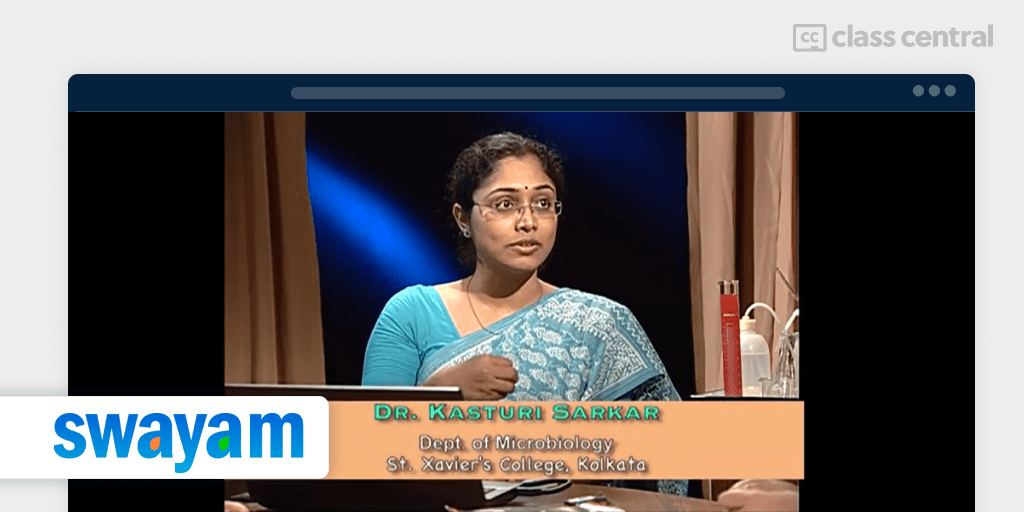
Although I have taken over 160 courses via several course platforms, I had never taken a Swayam course. I was curious about how the major Indian course platform compares with others such as Coursera, edX, and FutureLearn.
With an interest in biology, I chose Industrial Microbiology and Immunology by St. Xavier’s College (Autonomous), Kolkata and CEC.
Why I chose this course
I was interested to learn exactly what Industrial Microbiology is. The course soon explained how microbes are involved in many processes, from producing fermented foods, alcoholic drinks, and vinegar, to vitamins and antibiotics. I was amazed by the variety of products that are created with the help of microbes. It was also interesting to learn about issues of scaling up a process from experimental systems to large productions. For example, instead of simply shaking a laboratory flask to aerate the mixture, spargers are used to introduce air into an industrial-sized vessel.
I have been interested in biology since my school days and have taken several online courses on the topic.
The course page does not mention any prerequisites, but I think I would have struggled in the course if I had not done high school biology and chemistry.
Lecturers
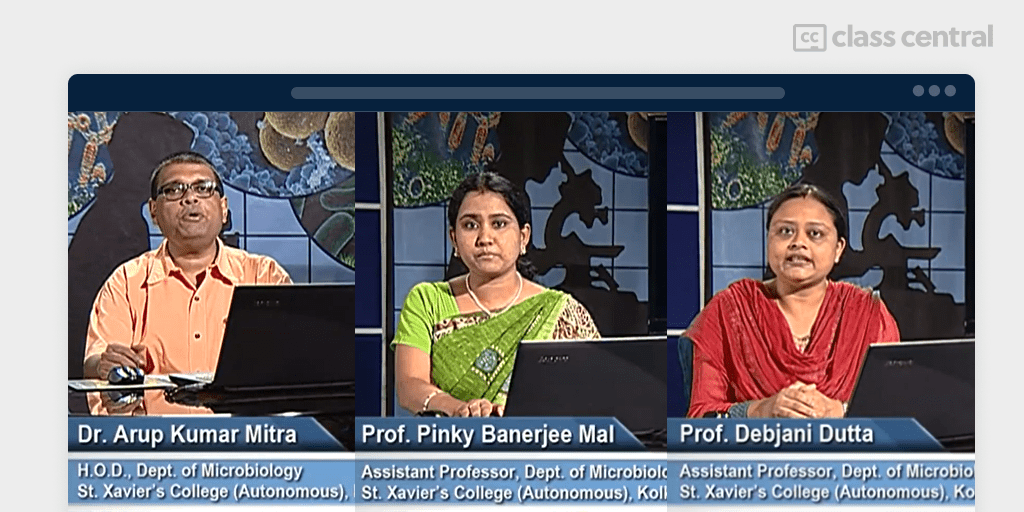
Although the course outline names Dr. Kasturi Sarkar as the instructor, some lectures are taught by Dr. Arup Kumar Mitra, Prof. Pinky Banerjee Mal, and Prof. Debjani Dutta.
The Course
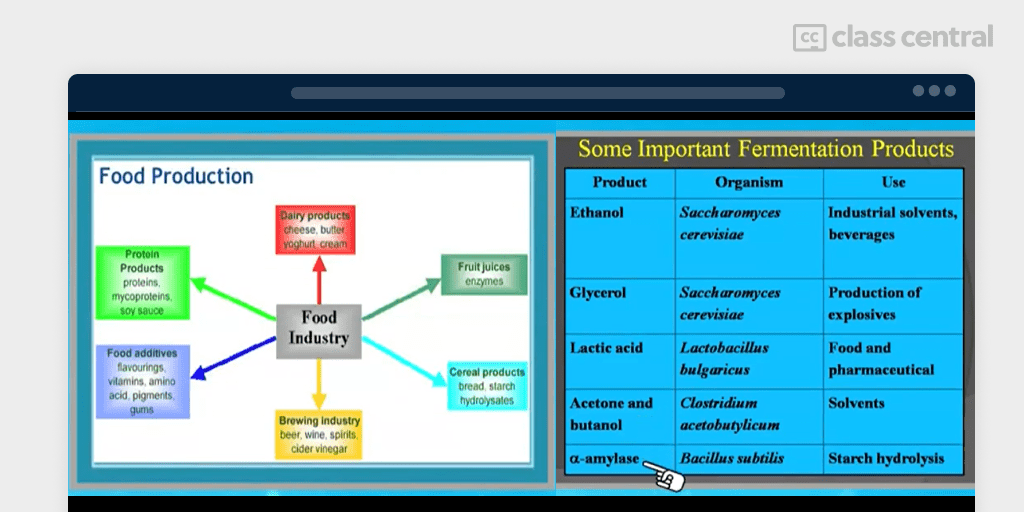
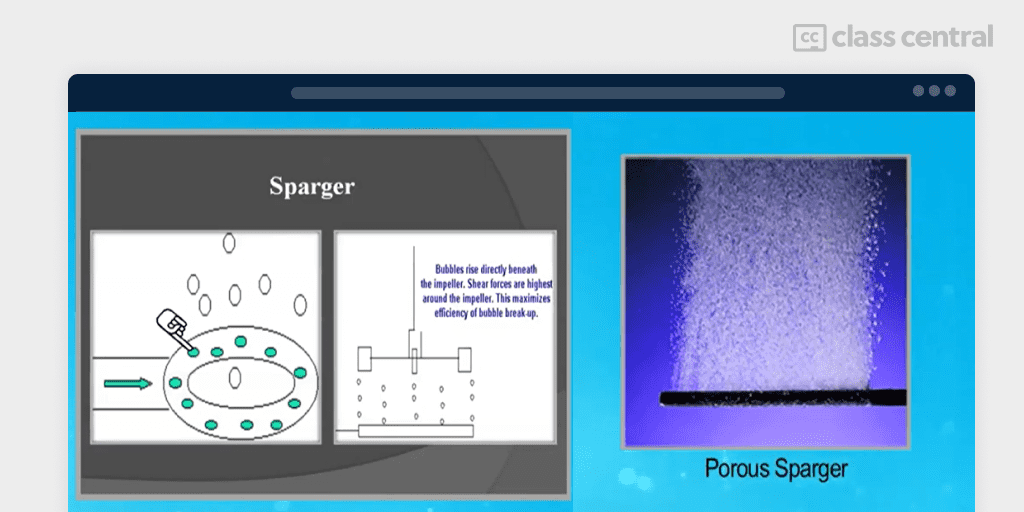
The course is divided into two distinct parts. The first 21 lectures cover industrial microbiology and the remaining 20 are about how immunoglobulins in the body’s immune system work. Although I have taken previous immunology-related courses, this one taught some different details. Each of the 12 weeks had three or four video lectures of around 20-30 minutes; between one and two hours per week. Five ungraded multiple-choice quiz questions followed each video. While they served as a good memory jogger for the material covered, the questions occasionally referred to points in later videos. Each week finished with five challenging graded multiple-choice questions, due before midnight in India each Sunday. These make up 30% of the final grade for the course, with a final exam worth 70%.
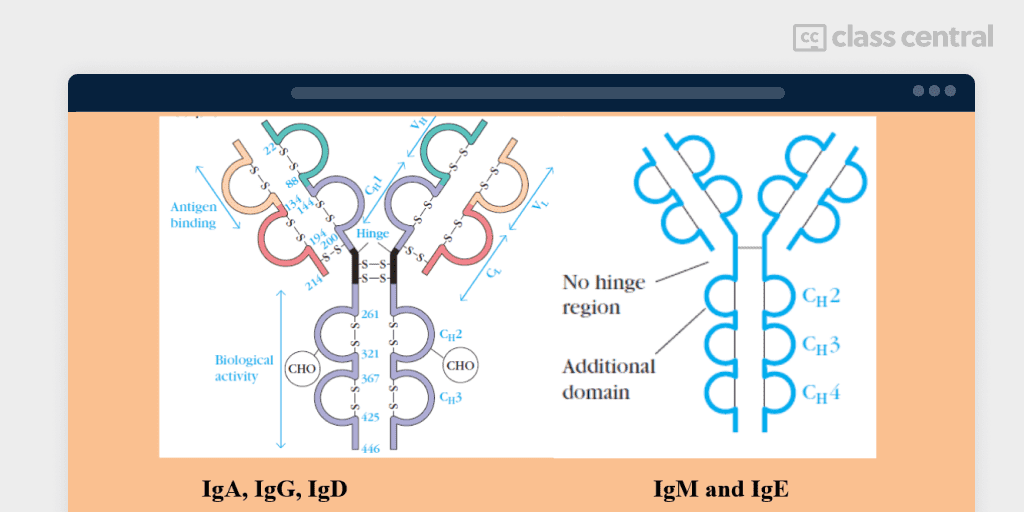
I took around three hours per week, pausing and replaying parts of the videos, using the academic transcripts to understand the material, and taking the quiz. If I was taking the course for academic credit rather than personal interest, I would have spent more time committing it to memory.
Handy features included closed captions that can be switched on or off. The video transcript, academic script, glossary, FAQs, PowerPoint, and references are also provided for each video. The Ask a question button could have been a useful tool, but none of the questions posted from it by various learners received any answers. The only answers posted in the discussion forum by course staff were about course logistics such as exam information “will be notified on the SWAYAM website https://swayam.gov.in/ after the completion of your course/July semester. Thank you.”
The 12 weeks of coursework finished in late September. At the time of writing (mid October), the exam date has not appeared on the website. Since I believe exams are held in various cities in India, I do not expect to travel from Australia to sit the final exam, but if I was a student using the course as part of my degree, I would find the uncertainty quite stressful.
The lack of communication extended to other aspects. I received a “Welcome” email when I enrolled in June, but no others since. When the course opened on July 4, no reminder email arrived. This contrasts with a different Swayam course taken by my colleague @archisha who received regular emails. Would it have been so difficult to send out periodical emails to the 1397 people enrolled in the course? It makes a big difference to the learner experience, to feel part of a community.
Conclusion
At 12 weeks, this was one of the longest MOOCs I have taken in several years. Content and scheduling had a university vibe. Course material was released weekly, and the weekly quizzes had strict deadlines. One participant who joined the course late asked if the quizzes he’d missed could be opened up, but was told that they were no longer available. These aspects reminded me of the early MOOCs I took, with emphasis on university schedules, strict deadlines and longer courses. Since then, several of the large MOOC providers have eased these university-style rules. This has made their courses more flexible for part-time learners who need to fit their online learning around their work commitments and family life. Since SWAYAM courses can be used as credit towards degrees for many Indian students, it should not have been a surprise that these conditions are evident.

